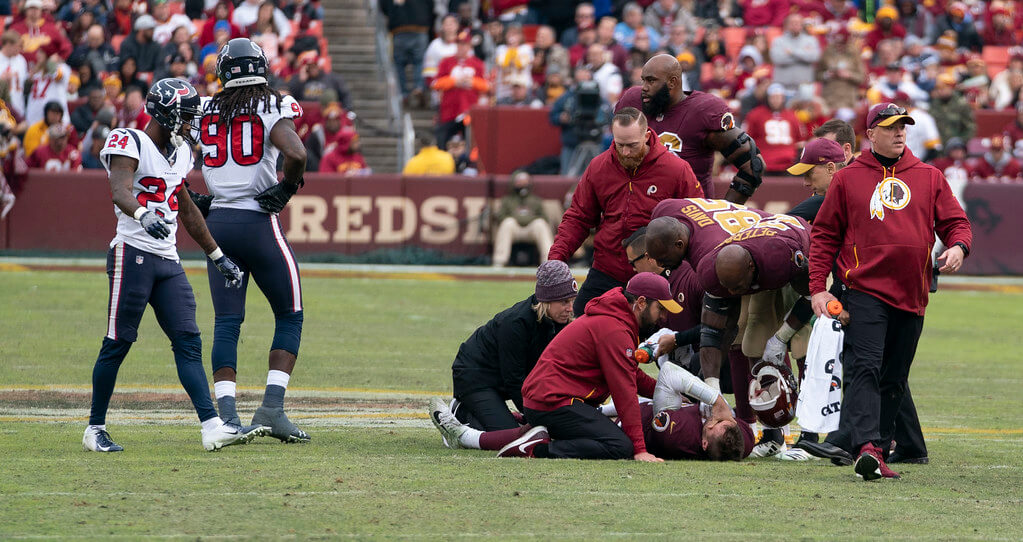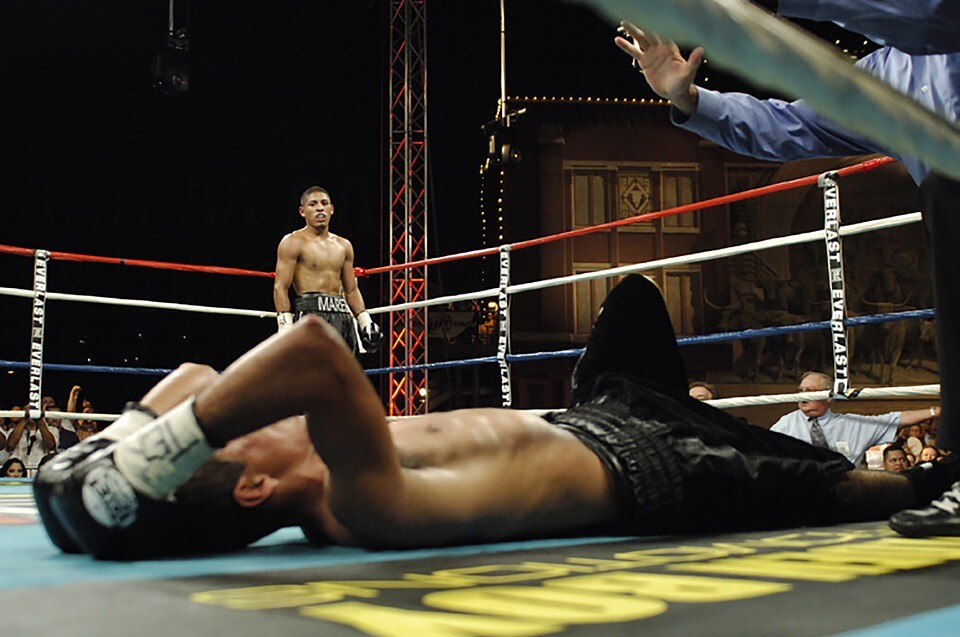Concussion in Sport
 Concussions are common in contact sports like American football)
Concussions are common in contact sports like American football)Everyone loves to see a full-blooded confrontation between two sports teams that are giving it their all. It’s what makes sports so compelling to watch—the sheer commitment of the players on both sides determined to win. Unfortunately, that commitment can often lead to injuries, even when the game is played completely within the rules, and the most troubling of these are head injuries resulting in concussion.
What is concussion?
Concussion is a form of traumatic brain injury caused by a blow to the head. This can happen in many different ways in sport, including a clash of heads, the collision of the player’s head with the ground or another object, or impacts such as high tackles in contact sports. Regular or repeated concussions have been linked to a number of neurological conditions; these include chronic traumatic encephalopathy, which can lead to mental health problems such as early onset Alzheimer’s, motor neurone disease and Parkinson’s disease.
A study by Glasgow University found that former professional soccer players were five times more likely to suffer from Alzheimer’s, three and a half times more likely to suffer from dementia and four times more likely to suffer from motor neurone disease than the population at large. This was attributed to the fact that they suffered regular mild concussions from heading heavy leather footballs week in, week out during their playing career. Neurological problems due to concussion are also common amongst boxers; the condition, dementia pugilistica, was identified as early as the 1920s.
 Head trauma from boxing is so common that it has its own medical name
Head trauma from boxing is so common that it has its own medical nameHow to recognise if you have concussion
Concussion symptoms will vary from person to person and injury to injury. What’s more, symptoms may manifest immediately or take several minutes, or even hours, to appear. It is important to understand that you do not have to be knocked unconscious to suffer a concussion and that any blow to the head can produce concussion symptoms. The initial signs of concussion include confusion, disorientation, memory loss and lack of coordination. As symptoms develop, you may experience headaches, light sensitivity, tiredness, vomiting or loss of concentration.
Whether you are playing for the San Francisco 49ers, one of the favourites for the NFC West title, or San Francisco's Paradise High in the State Championship, head injuries have to be taken very seriously. If you experience any of the above signs or symptoms, you need to report this to your coach or team doctor as soon as possible and get checked out. Putting the success of the team ahead of your own health by playing on will only risk making things considerably worse.
How common is concussion?
It is hard to be sure how many concussions occur in sports, as it is estimated that as many as half of all concussions go un-reported. This is partly because players do not recognise the symptoms and so do not realise that they are concussed and partly because players are reluctant to leave the field, even if they do understand their symptoms. Scottish rugby player, Rory Lamont even claimed that some of his fellow professionals deliberately did badly in their pre-season baseline cognitive tests to make sure that they would match, or better, those results—even if they were concussed in a game—so that they could stay on the pitch.
Studies have shown that there are as many as 3.8 million reported concussions in US sports alone every year, with 15% of student players reporting at least one concussion per year and 6% reporting two or more. American football alone is thought to cause at least a quarter of a million of these injuries every year. In the NFL, each team has at least one concussed player every fourth game throughout the season, and as the skill levels drop off in the lower leagues, concussions become far more common. A study by the University of North Carolina showed that Division III sides and younger football squads have a far greater incidence of concussion than the higher leagues.
What is being done about concussion in sport?
Concussion was not talked about much as an issue much before the turn of the millennium, but it has become a major talking point in all contact sports. In 2013, the NFL agreed to pay $765 million towards medical examinations, research and compensation in a case involving more than 4,500 former football players. This pay-out clearly focused the minds of sport’s ruling bodies and has led to the introduction of concussion protocols and rule changes in a number of sports.
The good news is that this appears to be working. Concussion injuries over the pre-season and regular NFL season were down 24% in 2018, with regular season concussions down by 29%. This is partly due to improvements in helmet technology and the banning of the lowest-performing helmets, but the figures also owe a lot to new rules that have outlawed the use of the helmet to initiate contact. New rules have also been introduced to make kick-offs safer.
Other sports have also made rule changes in the hope of reducing head injuries and concussions. Rugby union has become much tougher and more competitive since 1995, when the sport turned professional, allowing players to train and bulk up on a full-time basis. In response, World Rugby has introduced stringent measures concerning high tackles, which resulted in a record eight players being sent off for foul play in the recent Rugby World Cup in Japan. Even so, this did not prevent England from losing a key player, prop Kyle Sinkler, to a head injury just two minutes into the final, after he was knocked out cold.
 It takes a lot to floor rugby’s Kyle Sinkler
It takes a lot to floor rugby’s Kyle SinklerThe future for sport
Head injuries and concussions are complex issues for sports. On the one hand, no one should be put in danger simply by playing a game. However, on the other hand, if we take all the contact and aggression out of sports, then they often lose much more than they gain. Finding a balance between the two that keeps the players safe, yet still engages the fans and remains true to the spirit of each sport, is not easy and is something that coaches, administrators and lawmakers will have to wrestle with for a long time to come.
839GYLCCC1992



Leave a Reply